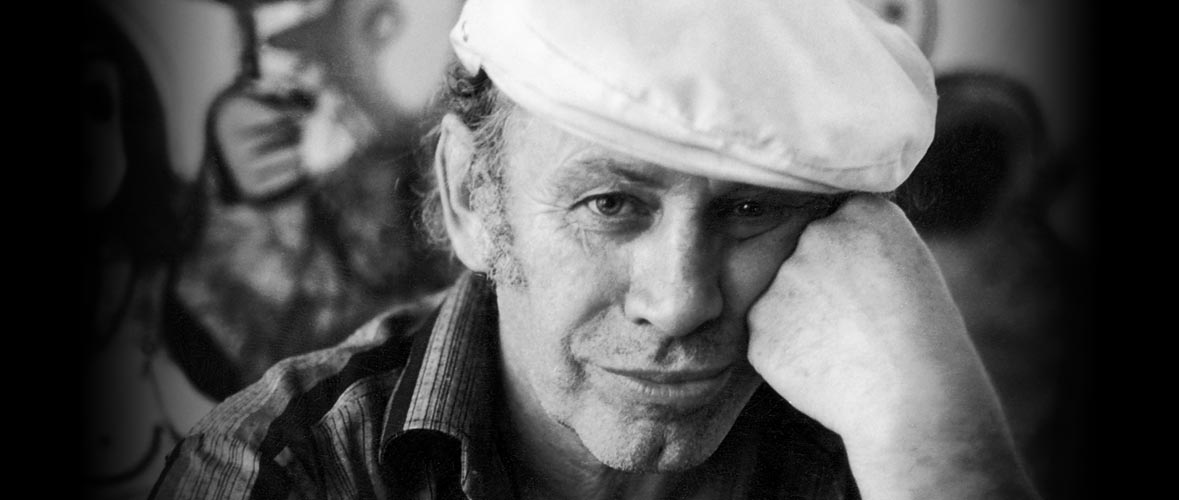

The exhibition of Vladimír Kompánek, one of the greatest figures of post-war Slovak art, showed a survey of his oeuvre: sculptures and paintings. As a protagonist of the Mikuláš Galanda group, he took an active share in the revival of traditions of interwar Slovak Modernism in the 1950s. In his sculptures and drawings he explored the simplified archetypal form as a universal timeless symbol, combining these inspirations with the ingenious imagery and traditions of Slovak culture. Reducing the sculptural form, he achieved a pure calligraphic sign system. His sculptures became two-view high reliefs cast in bronze, later replaced by wood. He was inspired by rural motifs and the human being in symbiosis with nature. Reduced to silhouettes resembling totemic symbolic verticals, the figures are penetrated by mysterious meanings of ancient myths, Gothic churches, chapels, wayside crosses and country women. The artist has been concerned with painting since the 1970s. Exploiting his experience in drawing and sculpture, he developed his colouristic talent. These works showed the prevalence of rural motifs from the Slovak landscape. His characteristic themes, carnival masks and parades draw inspiration from the wealth of folk traditions. Kompánek’s painting resounds with a specific balladic tone of folk literature transposed into modern picture form.
Vladimír Kompánek was born on October 28, 1927 in Rajec. He was one of the first graduates of the Academy of Fine Arts in Bratislava (1949 – 1954, prof. J. Kostka). With his friends, he founded the Mikuláš Galanda Group in 1957 in Martin and found his initial success in sculpture. In 1964 and 1966 he represented Slovakia at the Venice Art Biennale and later at EXPO ´67 in Montreal and EXPO ´70 in Osaka. In 1965 he won the Cyprián Majerník Award, in 1967 the prestigious Gottfried Herder Prize in Vienna and the State Prize in 1968.
In 1968 Vladimír Kompánek was actively involved in social events and was later expelled from the Slovak Fine Artists Union for “ideological reasons.” During this period, he began to draw, create small sculptures and paint.
In 1987, Kompánek became one of the main initiators of the revivalist stream. He signed the declaration entitled Niekoľko viet (Several Sentences, 1988) and other protest declarations. In 1993, he and his friends founded Spolok výtvarníkov Slovenska (Society of Visual Artists of Slovakia), where he served as its chair and distinctively participated in the founding of Ateliér slovenských umelcov (Slovak Artists Studio) at Cité Internationale des Arts, Paris. He also exhibited at numerous solo and collective exhibitions at home and abroad. For his noteworthy artistic merits, he was awarded the Martin Benka Prize in 2002, the M. A. Bazovský Prize in 2003, the Crystal Wing Award in 2007 and in 2008 the Tatra Banka Foundation Award. Vladimír Kompánek died in Bratislava on January 20, 2011.






















